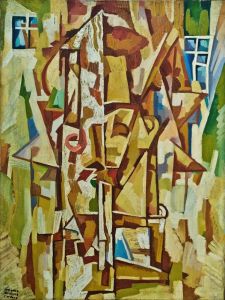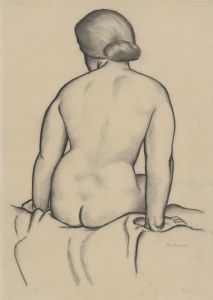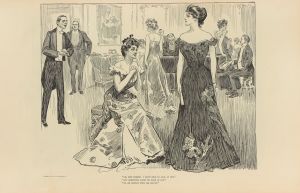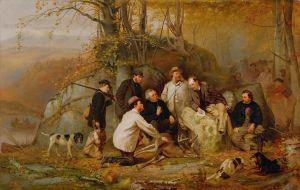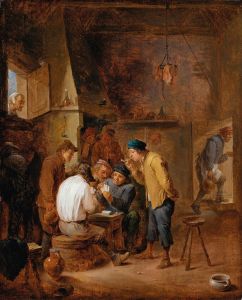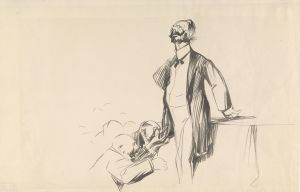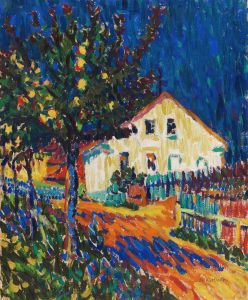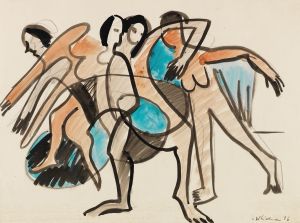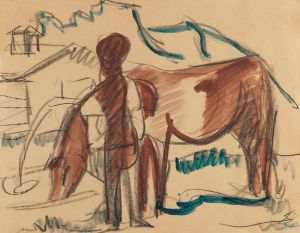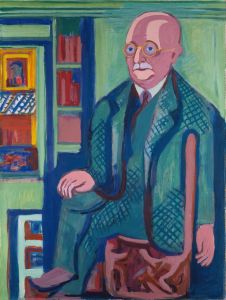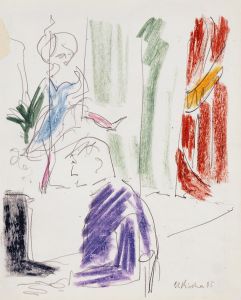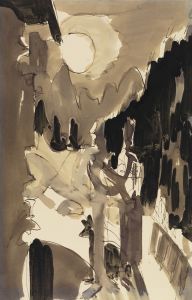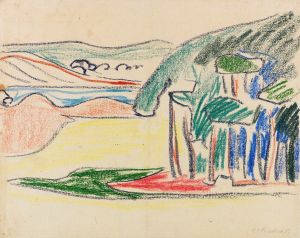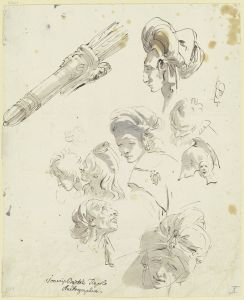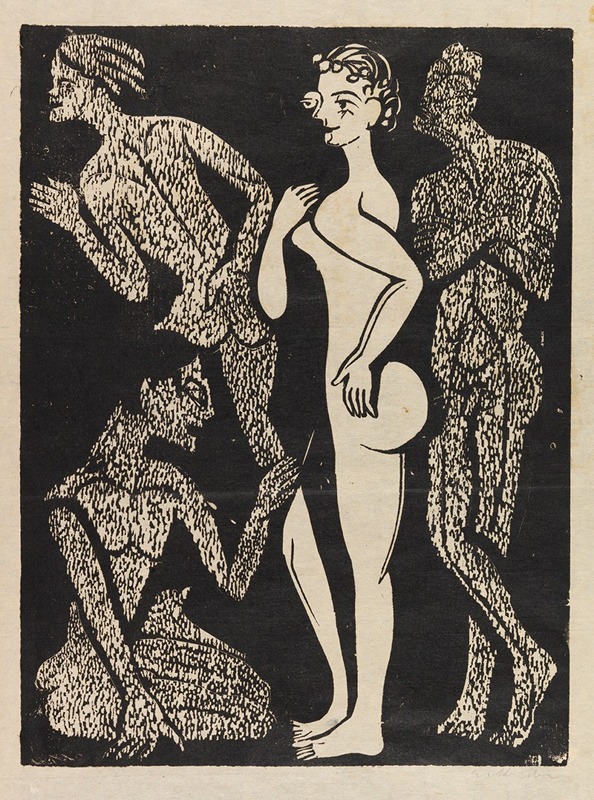
Die Frau und die Männer
A hand-painted replica of Ernst Ludwig Kirchner’s masterpiece Die Frau und die Männer, meticulously crafted by professional artists to capture the true essence of the original. Each piece is created with museum-quality canvas and rare mineral pigments, carefully painted by experienced artists with delicate brushstrokes and rich, layered colors to perfectly recreate the texture of the original artwork. Unlike machine-printed reproductions, this hand-painted version brings the painting to life, infused with the artist’s emotions and skill in every stroke. Whether for personal collection or home decoration, it instantly elevates the artistic atmosphere of any space.
Ernst Ludwig Kirchner's painting Die Frau und die Männer (translated as The Woman and the Men) is a work by the German Expressionist artist, who was a founding member of the influential art movement Die Brücke (The Bridge). Kirchner, known for his bold use of color and dynamic compositions, often explored themes of modern life, human relationships, and psychological tension in his works.
Die Frau und die Männer was created in 1913, a pivotal year in Kirchner's career. During this period, he was deeply engaged in developing his distinctive style, characterized by angular forms, vivid colors, and emotionally charged imagery. The painting reflects Kirchner's interest in the complexities of human interaction and the roles of gender in society. It depicts a central female figure surrounded by male figures, a composition that suggests themes of power dynamics, societal expectations, and interpersonal relationships.
The painting is executed in Kirchner's signature Expressionist style, with exaggerated forms and a sense of movement that conveys emotional intensity. The figures are rendered with sharp, angular lines, and the color palette is striking, with contrasting hues that heighten the dramatic effect of the scene. This stylistic approach aligns with the goals of Die Brücke, which sought to break away from traditional artistic conventions and express raw, unfiltered emotion.
Kirchner's work during this time was influenced by his experiences in Berlin, where he moved in 1911. The bustling urban environment and the complexities of modern life became central themes in his art. Die Frau und die Männer can be seen as part of this broader exploration, reflecting the tensions and dynamics of relationships in a rapidly changing society.
The painting is housed in the collection of the Brücke-Museum in Berlin, which is dedicated to the works of Kirchner and other members of Die Brücke. The museum provides context for the painting within Kirchner's broader body of work and the Expressionist movement as a whole.
As with many of Kirchner's works, Die Frau und die Männer invites viewers to interpret its themes and emotions, making it a compelling example of Expressionist art. It remains an important piece for understanding Kirchner's artistic vision and the cultural currents of early 20th-century Germany.





